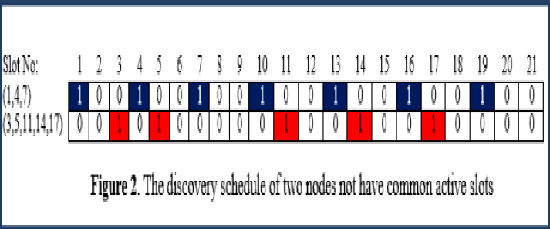


Indian Journal of Science and Technology
Year: 2020, Volume: 13, Issue: 26, Pages: 2633-2643
Original Article
Sagar Mekala1*, Dr K Shahu Chatrapathi2
1Department of Computer Science and Engineering, Mahatma Gandhi University, Telangana State, India
2Professor & Head, Department of Computer Science and Engineering, JNTUH College of Engineering Manthani, Jawaharlal Nehru Technological University, Hyderabad, Telangana State, India
*Corresponding Author
Email: [email protected]
Received Date:31 May 2020, Accepted Date:03 June 2020, Published Date:29 July 2020
Background: The need for an efficient neighbor discovery model is tremendously essential with the development of Wireless Sensor Networks (WSNs).The neighbor discovery model has growingly been significant in enhancing the performance of WSNs. Methods: In this study, adaptive energy duty-cycle, energy-efficient Balanced Incomplete Block Design (BIBD) hybrid scheme is proposed for WSNs that controls collisions, and overhearing obstacle by maintaining energy over WSNs. Energy adaptive BIBD leverages the features of symmetric BIBD. Evaluation of the proposed model is demonstrated using the TOSSIM tool, and the performance parameters are compared with other wellknown neighbor discovery process, including Disco, U-Connect, and Searchlight, Hedis, and Todis algorithms. Findings: The outputs of our simulation study illustrates that the proposed model significantly outperforms other neighbor discovery algorithms with reference to energy-efficiency and discovery latency.
Keywords: Wireless sensor networks; energy efficiency; neighbor discovery; block design; collisions
© 2020 Mekala, Chatrapathi. This is an open-access article distributed under the terms of the Creative Commons Attribution License, which permits unrestricted use, distribution, and reproduction in any medium, provided the original author and source are credited. Published By Indian Society for Education and Environment (iSee)
Subscribe now for latest articles and news.